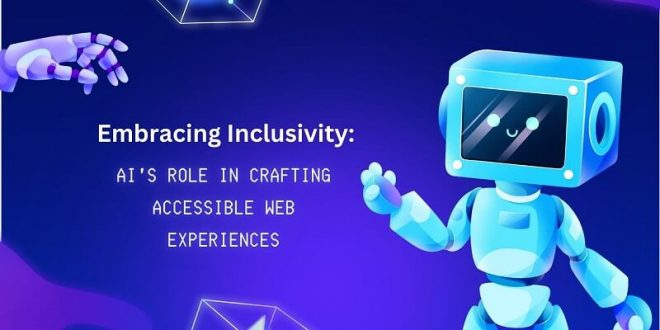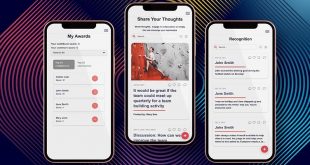Learn how AI is transforming web accessibility and ensuring equal access to information for all users. Explore the role of AI in crafting accessible web experiences in this comprehensive guide.
The digital realm has long been lauded as a level playing field, offering equal access to information and services. However, for millions of users with disabilities, the web remains a place of barriers. The quest for universal design has been arduous, but with the advent of Artificial Intelligence (AI), the tide is turning. AI is not just a tool; it’s a game-changer in crafting web experiences that are genuinely accessible to all.
Role of AI in Crafting Accessible Web Experiences:
AI: The New Ally in Web Accessibility
Imagine a website that adapts to each visitor’s needs, changing its layout, colors, and navigation based on individual preferences and abilities. This is the potential of AI in web design. Machine learning algorithms are now adept at identifying and removing accessibility issues, learning from user interactions to improve and personalize the browsing experience.
Breaking Down Barriers with Smart Technology
Screen readers have been invaluable for visually impaired users, but traditional versions can only do so much. AI-powered screen readers take it a step further by offering context to visual content, interpreting and describing complex images, and making sense of data visualizations. These intelligent programs can even anticipate user questions and provide explanations for things that might otherwise go unexplained.
Conversational Interfaces and the Power of Voice
Voice-activated interfaces are reshaping web accessibility. Users with mobility or visual impairments can navigate sites, access content, and complete transactions with simple voice commands. AI-driven chatbots and virtual assistants, which understand and respond to natural language, are integral to this transformation. They act as personal guides through the digital landscape, offering a hands-free experience that’s both efficient and inclusive.
Predictive Personalization: A New Frontier
The beauty of AI lies in its ability to predict and adapt. Adaptive web design now employs AI to predict the needs of users with disabilities, personalizing content and controls to meet their unique requirements. This isn’t just about bigger text or contrasting colors; it’s about creating a dynamic user experience that’s tailored to each individual, evolving as the user’s needs change.
Accessibility Analytics: Understanding the User Journey
Behind the scenes, AI is hard at work analyzing how users interact with a website. This data is vital in understanding the barriers faced by users with disabilities. With AI’s analytical power, designers and developers gain insights into the user journey, allowing them to pinpoint obstacles and refine their designs for greater accessibility.
Empowering Users Through Design
The ultimate goal of web design is empowerment, and AI is the key to unlocking it for users with disabilities. By learning from user behavior, AI can suggest layout changes that improve navigation for users with cognitive disabilities or offer alternative ways to consume content for those who learn differently.
Training Tools for Tomorrow’s Web
The ripple effect of AI in web design also extends to educating the designers themselves. AI-powered training modules can simulate disabilities, giving designers a first-hand perspective of the challenges faced by these users. This empathetic approach is crucial in fostering design philosophies that prioritize accessibility from the ground up.
Conclusion
In a world spinning with constant innovation, AI stands out as a beacon of hope for inclusivity in web design. It’s the force behind a new era where websites aren’t just places people visit but spaces where everyone truly belongs. With every smart adjustment and personalized interface, AI ensures the web’s vast resources are within reach for all, embodying the true spirit of universal access. And just like a skilled player at Hellspin knows the importance of an inclusive gaming environment, web designers now recognize the critical role of AI in creating a web without limits. The future is not only bright; it’s accessible.
Interesting Related Article: The Role of AI and Chatbots in Modern Communication Apps.
 Free Web Resources , psd, mockups, & web templates Best WordPress Themes & Best Html Templates
Free Web Resources , psd, mockups, & web templates Best WordPress Themes & Best Html Templates








